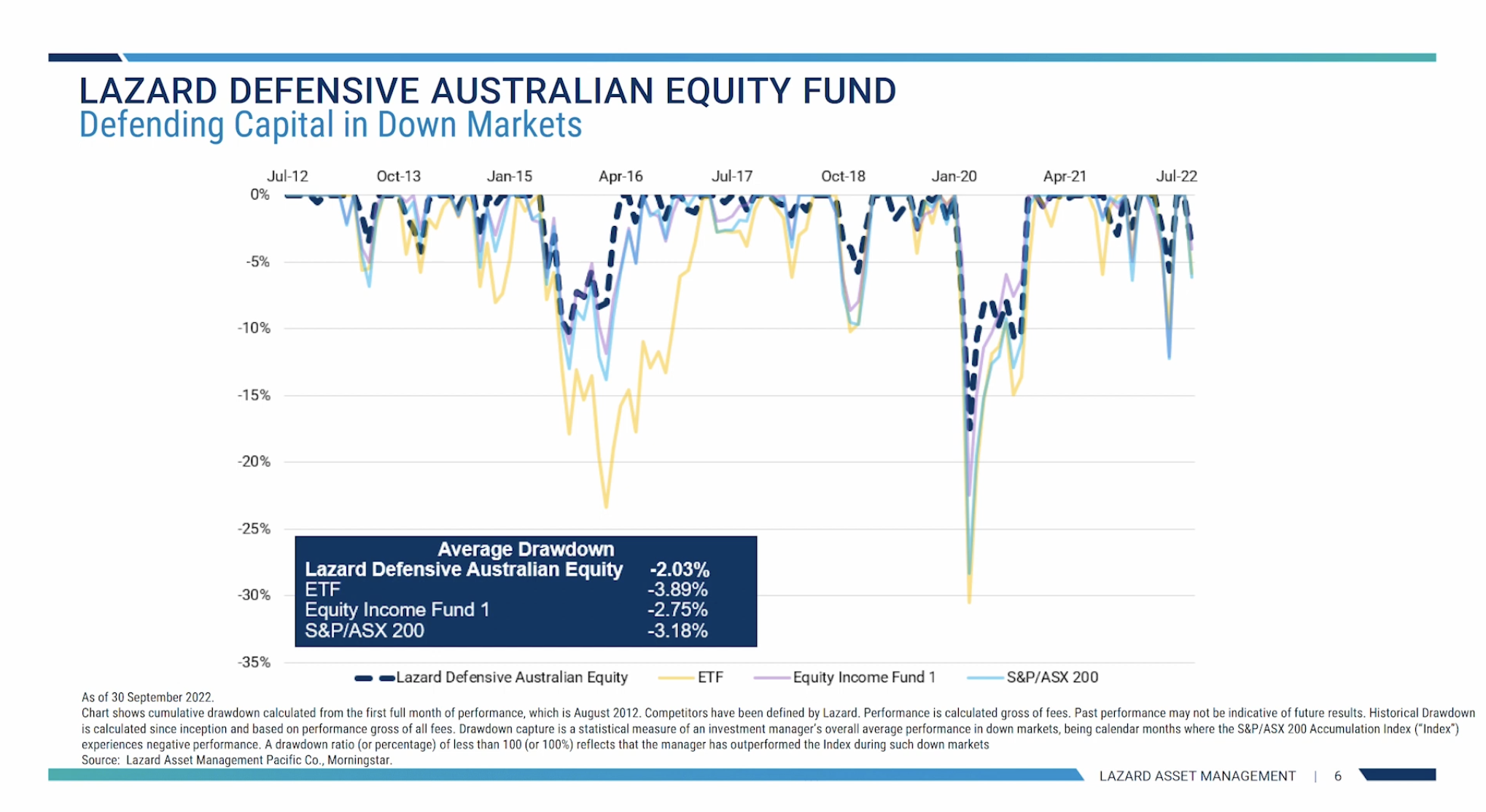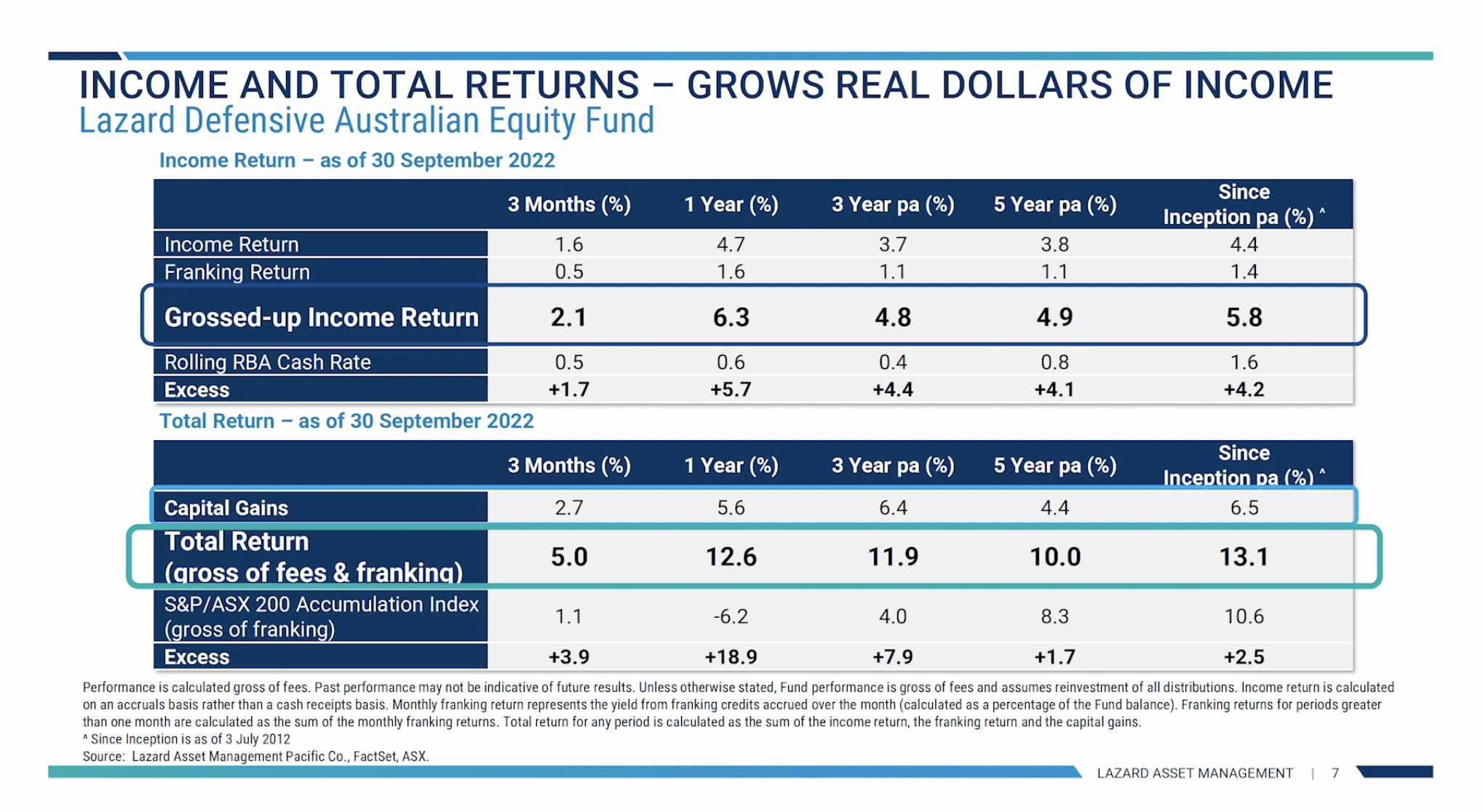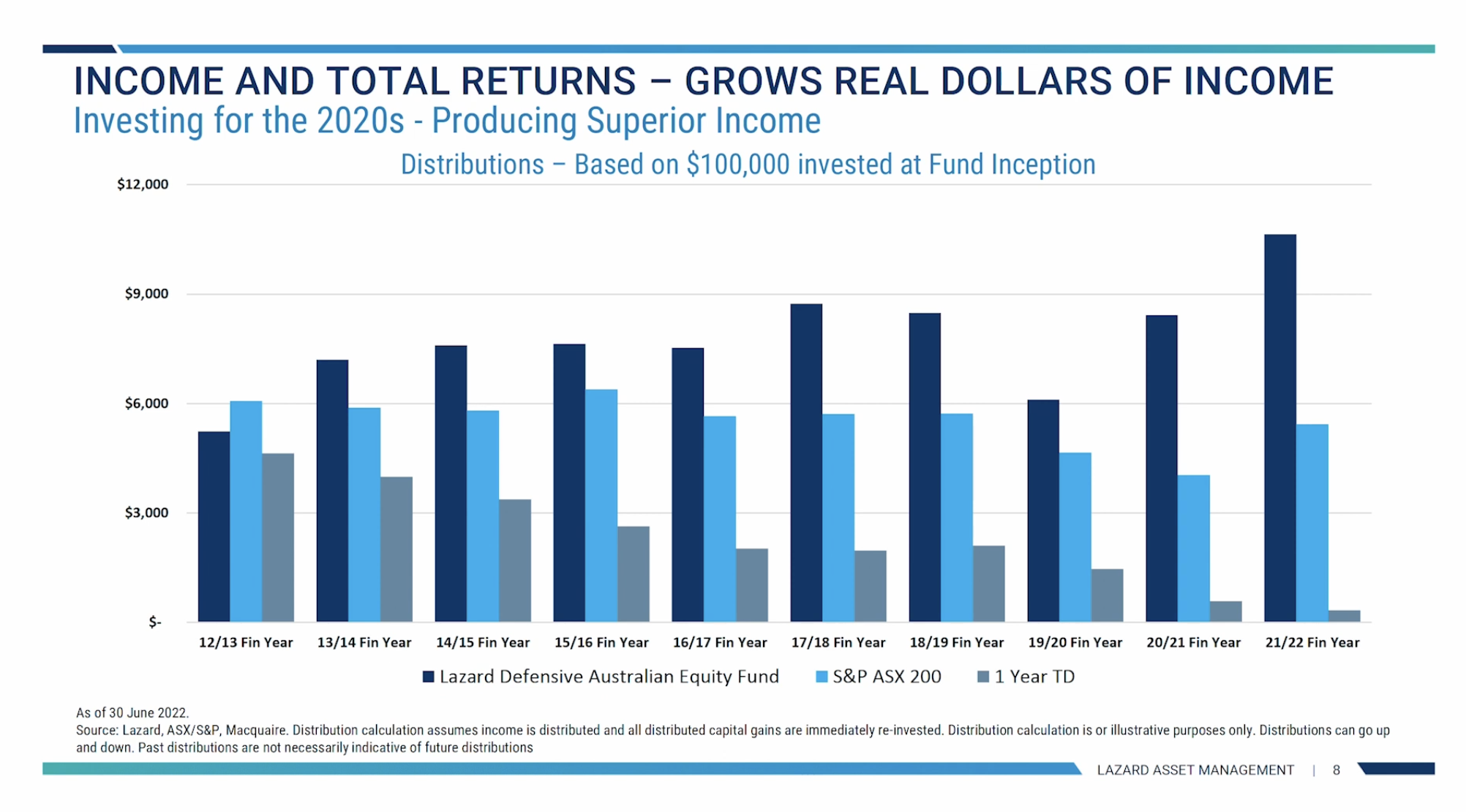The Fund designed to generate income (and alpha) in this new market regime
While the past decade was marked by virtually non-existent inflation, falling interest rates and rising markets, the next decade is likely to be remarkably different.
After all, we're seeing the highest rates of inflation in more than three decades and the fastest rate hiking cycle "in living memory", all while a litany of other worrying headwinds continue to lash markets. In this environment, income generation - rather than just relying on trending markets - is likely to be increasingly important.
That's according to Lazard Asset Management's Aaron Binsted, who manages the Lazard Defensive Australian Equity Fund.
This strategy has been specifically designed for pension and pre-pension investors - providing investors with lower volatility, lower risk of drawdown in negative markets, as well as the ability to grow income at a time when they need it most.
In this Fund in Focus, Binsted shares how the Lazard Defensive Australian Equity Fund has managed to deliver the highest total returns in its category, while taking on the lowest amount of risk amongst its peer set. Plus, he also outlines why he believes the Fund is made to outperform over the next decade.
Note: This video was filmed on the 9th of November 2022. You can watch the video or read an edited transcript below.
Edited Transcript
Aaron Binsted: Hi, I'm Aaron Binsted and I'm here to talk to you about the Lazard Defensive Australian Equity Fund - a strategy that has clear objectives of producing consistent investor outcomes. For those of you not familiar with Lazard, we are a large, experienced and well-resourced team that has been managing Australian equity strategies in this market for more than 20 years. There are four things I'd like to do in this session. Firstly, I'd like to explain who the Lazard Defensive Australian Equity Fund is for. Secondly, I'd like to introduce how the fund operates. Thirdly, I'd like to look back and see how well the fund has gone in terms of meeting its key objectives. And lastly, I'd like to just highlight why we think the Defensive Australian Equity Fund has the right investment approach for the 2020s.
Who is the Lazard Defensive Australian Equity Fund designed for?
This strategy has been specifically designed for pension and pre-pension investors. This is a unique group that has different needs to those in the accumulation phase and hence requires a tailored approach. We think there are some specific objectives this cohort of investors needs, including:
- Lower volatility
- Lower drawdowns in negative markets
- The ability to grow real dollars of income.
How does the fund operate?
The Defensive Australian Equity Fund is an equally weighted portfolio to minimise stock risk and give underlying economic diversification. To qualify for the portfolio, a stock needs to have a forward yield above the RBA cash rate. After all, why take a risk when you can get a higher risk-free income? The valuation of the shares needs to be above the current share price. We will not risk capital to chase income growth. And then thirdly and crucially, the income or dividend stream needs to be sustainable.
The Defensive Australian Equity Fund will typically be fully invested, but if there are not enough opportunities that meet our strict investment criteria, the fund will hold cash. This both protects capital when valuations are stretched and markets perhaps have elevated risk, and also provides the opportunity to deploy cash at more attractive valuations.
How successful has the fund been in meeting its objectives?
Pension and pre-pension investors have unique risks that don't feature for those in the accumulation phase. Risks like sequencing risk, decumulation risk and real income risk. To manage these risks, the fund has key objectives to lower volatility, minimise drawdown in negative markets, and grow real incomes. I'd like to look at each of these in turn now.
Lowering volatility

The chart above compares the total return and standard deviation of the volatility of several investment strategies over the last decade. As you may be aware, standard deviation is often used as a statistical measure of risk. You can see the ASX 200 shown here in the light blue diamond. Over the last decade, it has achieved a total return of about 9% per annum with a standard deviation of volatility measure of about 13.5% per annum. Clumped around the index, you can see several purple and yellow dots. These represent some active income strategies and some well-known income ETFs in the market. You can see that as a general rule, these strategies have earned total returns roughly in line with the general index. However, they have often done so with a higher level of standard deviation or risk. This is not an optimal outcome for pension or pre-pension investors in our view.
Further to the left on the chart, you can see some light green diamonds. These represent "buy-write" strategies. These strategies have generally achieved lower standard deviation of volatility and typically achieve high percentage income returns. However, this is done at the expense of total return and the inability to maintain or grow the capital base results in inferior dollar income for investors. In the top left of the chart, in that dark blue diamond, you can see the Defensive Australian Equity Fund. Not only are total returns the highest in the category, but this has been achieved with the lowest standard deviation or risk amongst the peer set. This has been done through stock selection and our rigorous investment process.
Defending capital in down markets

This chart here shows drawdowns in the ASX 200 over the last decade - you can see that detailed there in the light blue line. You can also see a yellow and purple line representing an income ETF and a well-known active income fund. The Lazard Defensive Australian Equity Fund is shown by the dark dashed blue line. You can see that the Defensive Australian Equity Fund typically experiences lower drawdowns than both the market and competing investment options and also typically achieves new highs in a shorter timeframe. This has been achieved through only investing in companies that have capital upside by not risking capital, and by holding cash when market valuations are stretched, protecting capital and giving the flexibility to invest at more attractive entry points.
Growing real dollars of income

To grow real dollars of income, both a reasonable percentage of income needs to be earned, and crucially, the capital gains need to come through. Both components of total return need to be actively managed in tandem and not one at the expense of the other. The reason why this is so important is shown on this next slide.

Investing in sustainable growing income streams and growing the capital base, results in superior dollar income generation. On this chart here, you can see the income result from three readily available investment options. If an investor put $100,000 into the ASX 200 a decade ago and the income was paid out and consumed annually, in FY22 that investor would receive $5,800 inclusive of franking credits. If that same investor had put $100,000 into the Lazard Defensive Australian Equity Fund, in FY22, they would've received $10,800.
Why is the Lazard Defensive Australian Equity Fund the right strategy for the 2020s?
We believe that the 2020s are going to be very different to the 2010s. We are in a new investment regime. The 2010s saw low and falling inflation, low and falling interest rates, continual monetary stimulus, tax cuts, and at the end of the decade, a very large fiscal stimulus. This resulted in elevated and increasing corporate profitability and trending equity markets. The start of the 2020s is looking very different. We have the highest inflation rates in a decade, the fastest rate cycle in living memory, cyclical markets, and talk of tax rises, just to name a few features. We believe that investors won't simply be able to rely on trending markets, that they need to be prepared to defend in downturns, and that income will be a larger part of total returns.

We've touched on many of these features, but there's one, in particular, I'd like to spend a bit more time on, and that is alpha generation. There has been much commentary that the setup for the 2020s is looking difficult. Economic growth may be challenged, and investors may simply not be able to rely on these underlying trends to drive returns. If this environment does eventuate, it will play to the Defensive Australian Equity Fund's strength. This is due to the fund's top quartile, alpha generation over the last decade. The fund does not need strong economic growth or trending markets to deliver returns, but stock selection outside of market trends has been a key driver.
The Lazard Defensive Australian Equity Fund has clear objectives and has produced consistent outcomes. We'd love to talk to you more about the Defensive Australian Equity Fund and how it can meet the needs of your clients in a pension and pre-pension phase. Thanks for listening.
Defence is the best form of attack
The Lazard Defensive Australian Equity Fund is designed to provide regular, tax effective income that grows over time. It sources that income by investing in Australian companies with sustainable dividends, or by investing in cash, depending on where the best opportunities exist. To learn more, please visit their website, or the fund profile below.

3 topics
1 fund mentioned
1 contributor mentioned


